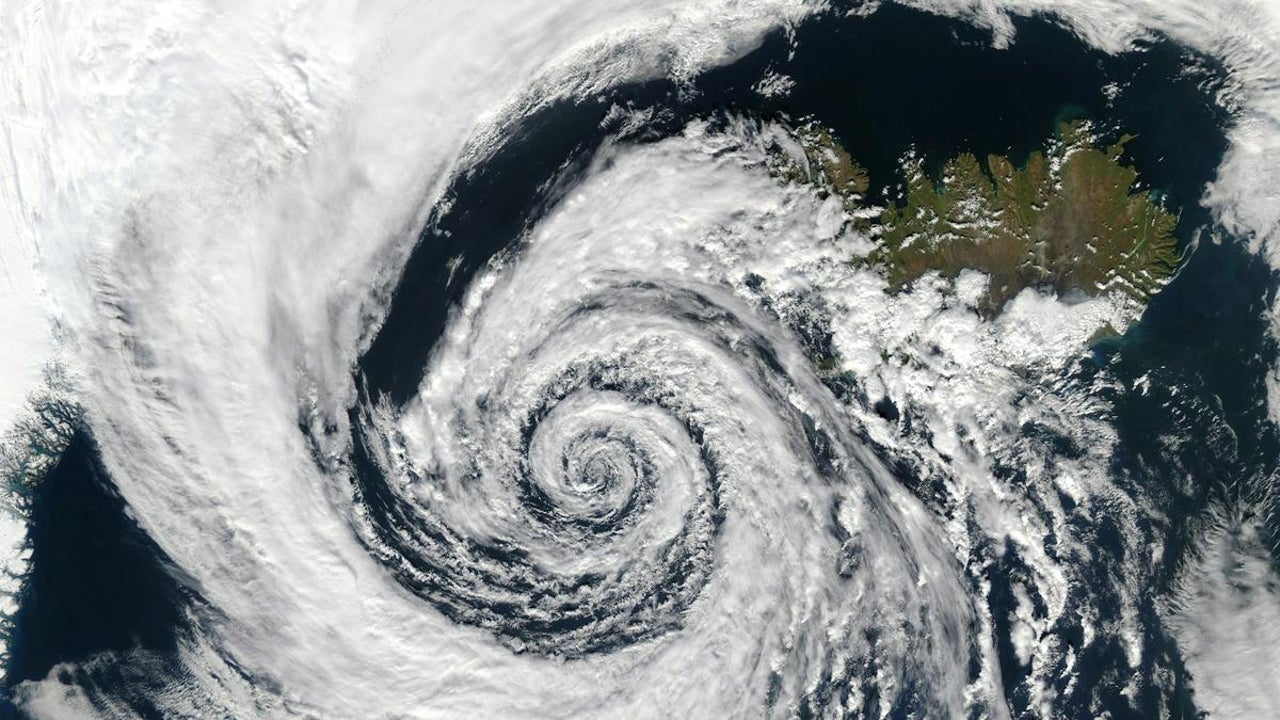Google has surpassed all professional weather models in the world with AI
AI-based predictions show remarkable advances in accuracy and speed compared to physics-based hurricane models

- November 10, 2025
- Updated: November 10, 2025 at 3:24 PM

In its first hurricane season, Google’s revolutionary AI Deepmind not only matched decades of human experience but also surpassed the results of two of the world’s most advanced supercomputer models.
As the National Hurricane Center and global weather forecasting agencies process the final verification data, the question is no longer whether AI can make weather predictions, but how long it will take for traditional methods to adapt or disappear completely.
As the 2025 Atlantic hurricane season comes to an end, the first assessments of model performance reveal a shift in the reliability of forecasts that could redefine meteorology.
AI can solve real technological challenges and save lives
The Meteorological Laboratory of Google DeepMind, which began issuing forecasts for tropical cyclones in June, has decisively outperformed traditional models based on physics used by national meteorological agencies.
Meteorologists and researchers reviewing the preliminary data claim that the results represent the first serious challenge in decades to the global dominance of numerical weather prediction systems, such as the Global Forecast System of the National Weather Service of the United States.
The climate scientist from the University of Miami, Brian McNoldy, analyzed the accuracy of the predictions for 13 named storms during this season.
Their preliminary comparison shows that DeepMind’s AI model systematically produced lower average position errors than the U.S. GFS at prediction intervals of up to 5 days. According to their calculations, the tracking error of DeepMind at 120 hours was an average of 165 nautical miles, compared to 360 nautical miles for the GFS, which represents a difference of more than double.
The contrast is especially significant when considering the technical approaches behind each system. The GFS is based on explicit physical equations that simulate atmospheric movement in three dimensions, and it runs on large-scale supercomputers at NOAA with frequent data assimilation cycles.
The DeepMind system, on the other hand, is a neural network trained with decades of archived weather data, allowing it to infer atmospheric patterns statistically rather than from basic physical principles. Its architecture can provide forecasts in a matter of minutes on standard GPU clusters, eliminating the need for massive computational infrastructure.
The DeepMind model not only surpassed the individual results of the GFS model, but also outperformed the official forecasts generated by humans and consensus models like TVCN and HCCA, which combine the results of multiple models to reduce bias.
If verified with the final statistics from the National Hurricane Center, these results would represent the first time that an AI system surpasses both automated forecasts and human consensus forecasts in the Atlantic basin.
The exceptional performance of DeepMind’s system raises questions about the long-term role of traditional numerical weather prediction. Physics-based models, such as the GFS, must integrate equations that describe fluid dynamics, radiation transfer, and thermodynamics at millions of grid points.
This process requires a great deal of computational power and often introduces numerical truncation errors. In contrast, data-driven neural models deduce the underlying dynamics directly from global reanalysis datasets, without the need for explicit equations.
These architectures belong to a class of AI methods known as “deep generative models,” capable of learning high-dimensional patterns. It is believed that the DeepMind framework uses optimized encoder-decoder functions for spatiotemporal prediction, allowing it to handle both tracking and intensity prediction within a single network architecture.
During this hurricane season, it has also shown reliable performance in estimating maximum wind speeds and pressure fluctuations, tasks that even sophisticated physics-based systems still handle inconsistently.
Meanwhile, the performance of the GFS this year has puzzled meteorologists. Although the model underwent a significant update in 2019 with the Finite-Volume Cubed-Sphere (FV3) dynamic core, the transition seems to have resulted in a regression rather than an improvement.
Lowry and others suggest that deficiencies in observational data, possibly related to federal budget cuts, may have exacerbated the problem, although that remains speculation. The National Weather Service has not yet published its internal assessment.
Journalist specialized in technology, entertainment and video games. Writing about what I'm passionate about (gadgets, games and movies) allows me to stay sane and wake up with a smile on my face when the alarm clock goes off. PS: this is not true 100% of the time.
Latest from Chema Carvajal Sarabia
- Funko is on the brink of ruin: have we grown tired of the bobblehead dolls?
- The worst product in Microsoft's history: it sold 11 units and 8 were returned
- Microsoft wants to launch new AI agents that could change everything in your company
- The CEO of Nvidia is clear: "China is going to win the AI race"
You may also like
 News
NewsDonald Trump says he was forced to sue the BBC for 1 billion dollars
Read more
 News
News"All video games use AI," say those from ARC Raiders
Read more
 News
NewsThese two legendary Hollywood actors have just sold their voices to AI
Read more
 News
NewsElden Ring: Nightreign has announced its new DLC in which it will include the most iconic boss from the first Dark Souls
Read more
 News
NewsLindsay Lohan and Jamie Lee Curtis are taking Disney+ by storm with this sequel to a cult classic from the company
Read more
 News
NewsTake-Two is facing significant internal pressure due to the firing of 35 developers before the launch of GTA6
Read more